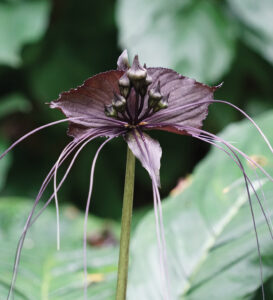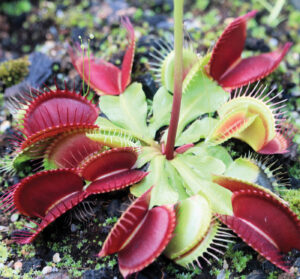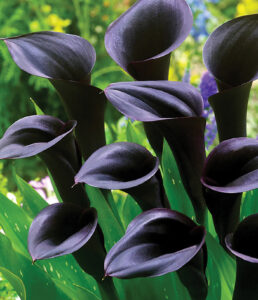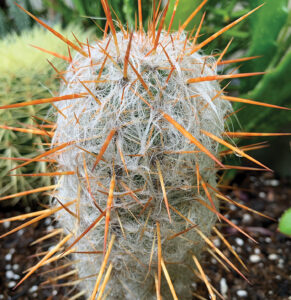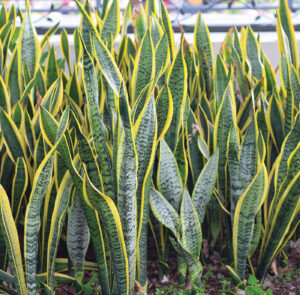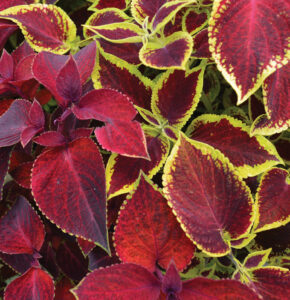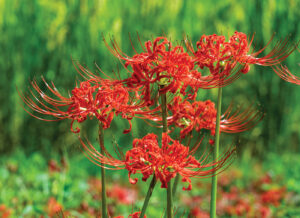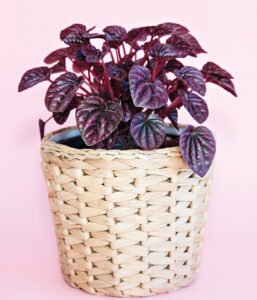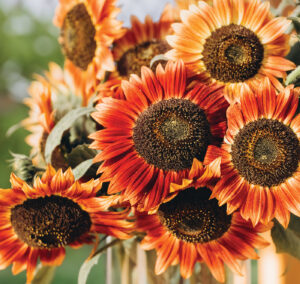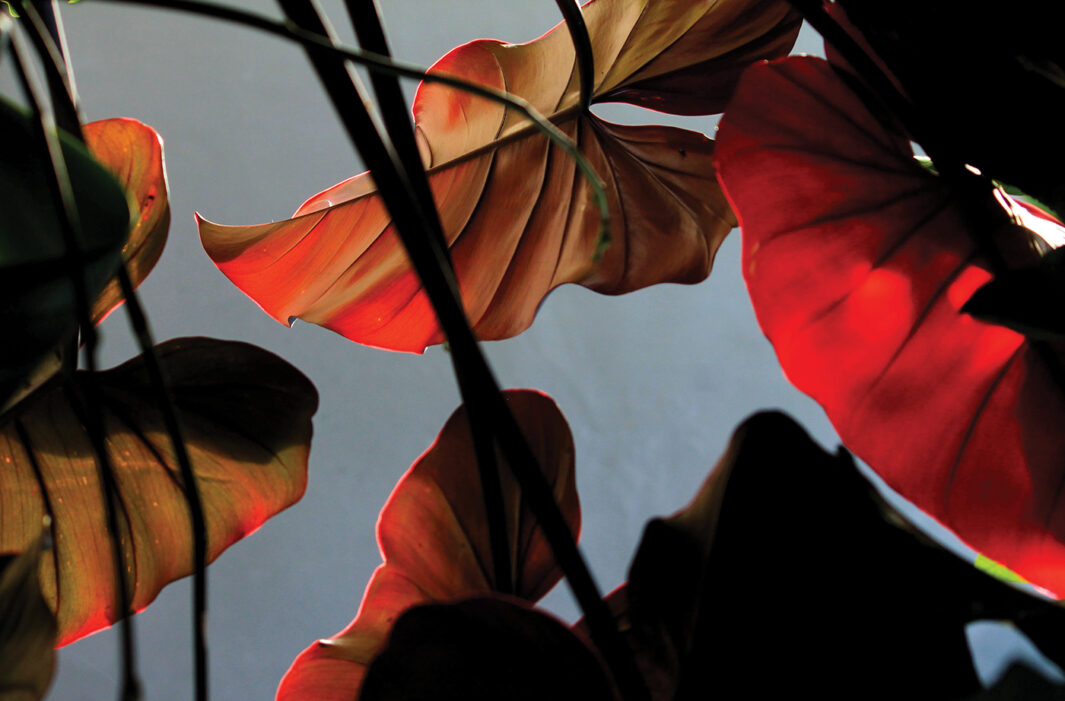
It’s that spooky time of year when we gather our fall decor to liven up our porches and lawns for the season. Along with the typical plastic decorations of ghosts, skeletons and spider webs, there are natural touches that commonly appear, like dried corn husks, pumpkins and mums. But many other plants can be used to give our homes a sinister (and even enchanting) vibe. The right plants can add devilish drama to the Halloween season.
You may never have thought of it before, but the world of plants possesses a creepy side that can be highlighted during our autumn holidays. With spidery leaves, blackish blooms and twisted stems, you can add a ghoulish fun touch to your botanical display.
While Halloween is all about the spooky factor with ghosts, bats, spiders and witches overrunning the decor, the scare doesn’t have to stop there. Consider including a few of the following frightfully fun plants, both inside and out. And this list isn’t all-encompassing. Browse through nurseries and markets with a ghoulish imagination, and you might find other things you can use to add an eerie and enchanting touch to this time of year.
Emerald Ripple Peperomia
With a bit of imagination, the dark reddish crinkly leaves of the Burgundy Emerald Peperomia can look like ghostly body parts. The leaves sit on the ends of red stalks which gives the appearance of an alien lifeform. In the house, keep this creature in bright, indirect light and moderate humidity. If you intentionally overwater for a Halloween bonus, withered, black and slimy leaves will add to the haunting mix.
Black Bat Flower
Talk about setting an eerie tone for your Halloween party, the Black Bat Flower will get you there. This native tropical looks like bats with whiskers and even mimics bats in flight. These spookies thrive in humidity and well-draining soil.
Venus Fly Trap
One of the ultimate hair-raising plants, the Venus Fly Trap does just what its name says: it traps insects with its enticing nectar. This predatory plant traps the insects for their nitrogen and phosphorus, which are not easily available in its native bog habitat. These can also be found in nurseries as houseplants. Should one of your guests brush up against it at a holiday gathering, look out! The trap will slam close for a spooky fright. This predator plant likes bright light and a well-draining soil.
Spider Plant
Like a creepy, crawly arachnid, Spider Plant is known to trail and form little babies at the ends of slender stems. It could be placed in a hanging basket along with a cottony spider web filled with spiders. It would look great in a seasonal container on mantles, windowsills or tabletops. It also likes bright light and well-draining soil.
Black Star Calla Lily
If you are planning a black color theme for the season, consider the Black Star Calla Lily which would fit right in with its deep purple color, which appears black. Whether placed in an indoor container or out on the patio, this lily likes bright, indirect light and damp soil.
Old Man Cactus
Be sure to invite the Old Man Cactus to your seasonal galas. This plant resembles something from a horror movie thanks to the white frizzy hair that coats it. It can be displayed in containers around your home, but beware! This plant is not as soft and fluffy as it may seem because those white hairs hide sharp spines below. The hairs protect the cactus from both heat and cold. It likes bright light and loamy or sandy well-draining soil.
Little Swiss Monstera
Little Swiss Monstera is a popular house plant that can adapt well to the spooky season. Its unique foliage features heart-shaped leaves with large holes like Swiss cheese that help create a mysterious look that can cast shadows wherever you put it. Do not overwater this monster, which can cause root rot. Keep it in bright, indirect light and well-drained soil.
Snake Plant | Mother-in-Law’s Tongue
With its dark green upright leaves that resemble a snake’s body, the snake plant can surely give you chills. The snake plant will last well past Halloween due to its pest and disease resistance. Keep it happy for years in bright indirect light and well-draining soil (and maybe don’t tell your mother-in-law its alternate name at your Halloween party).
Philodendron Royal Queen
The foliage growing from Philodendron Royal Queen will blend right into an autumn display. As this plant matures its colors change from a deep burgundy to dark green with long and dark red stems and heart-shaped leaves. It likes to grow in slightly acidic soil and indirect light.
Coleus
The popular coleus boasts colorful leaves that are neatly serrated and soft. The leaves can be green, purple, pink, red, black or yellow. The coleus’ leaf color combinations are infinite. You can use several of these colorful gems indoors or out to add pops of purple, black and green to your haunted designs. Coleus prefers soil that is moist, rich and well-draining and needs some indirect light to thrive. Choose full grown plants for your seasonal decor and when Halloween is over, keep them as houseplants or plant them in your garden.
Ornamental Ears of Corn
Ornamental ears of corn are popular autumn decorations. At Halloween time, all black or dark purple and orange varieties are perfect for the season. If you want to plant some for next Halloween, start early. Plant by July in order to be ready to harvest in October. For a bloody good corn haul, try planting Bloody Butcher Ornamental Corn.
Sunflowers
We usually think of the cheerful sunflower as a popular fall harbinger, but for a more spooktacular vibe, take a look at the darker varieties with orange or burgundy leaves for a spooky patch. Plant dozens of them for a creepy twist on a traditional corn maze. Or cut and use the dark flowers liberally as indoor decor. They, too, like bright light and well-drained soil.
The Bleeding Heart
The Bleeding Heart plant, with its long arched stems dripping with heart-shaped flowers, looks perfect for Halloween. They usually bloom in the spring, but they can be tricked to include them in the autumn landscape. In our moderate humid tropical climate, it might be best to keep them in permanent containers.
The Red Spider Lily
The Red Spider Lily has an unusual appearance and can be found growing wild in the yards of old southern homes. It is surrounded by creepy legends. It is believed to grow in hell (although we have no definite proof). Looking like a bloody red spider hanging upside down, it makes for some fine Halloween decorating.

